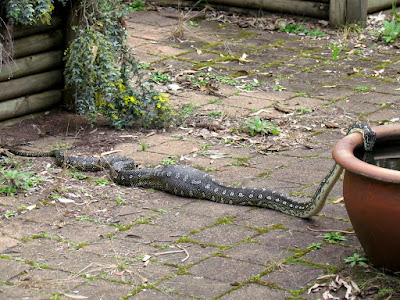I can recall as a little kid getting a fright when finding one of these weird creatures scuttling around in the bath. They were not that common but you would find one every now and then, usually under the house or around drains. However yesterday I found one resting on the laundry door but it did look different to the those of my earlier years.
It did take some tracking down for identification but finally found it to be from the SCUTIGERIDAE family species Allothereua maculata, a native House Centipede or Johnny Hairy Legs . However the common names are a bit confusing as the species of my childhood Scutigera coleptrata has the same names. That species is an import, originating from the Mediterranean region and widespread throughout the world, resulting from stowing away on ships. The Johnny Hairy Legs name is also strange as they have 15 pair of legs that are not at all hairy. The imports have naturalised mainly around urban areas where as the native species (around 8) are found mainly in bushland areas, with this one found throughout southern Australia. They move very fast and rundown their prey which are small insects, lizards
and other arthropods.



















































